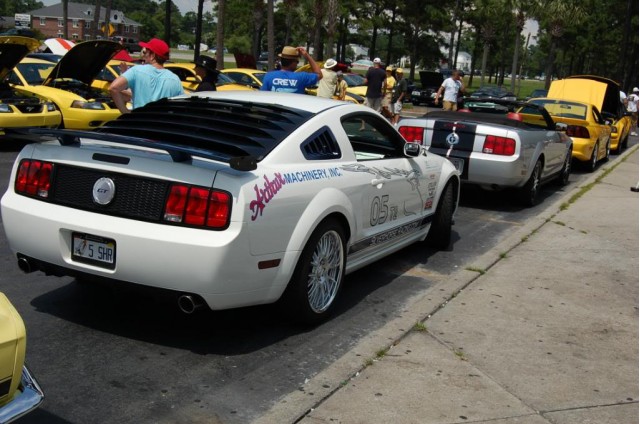A Complete Guide to Cooling Down Your Muscle Car
The Ford Mustang, one of the most iconic American muscle cars, has long been associated with performance, style, and power. However, like all high-performance vehicles, it can fall victim to overheating—a serious issue that, if ignored, could cause permanent engine damage. If your Ford Mustang got heated, don’t panic. This comprehensive guide walks you through what to do immediately, the possible reasons, long-term solutions, and preventive measures to ensure your Mustang stays cool under pressure.

Table of Contents
- Understanding Overheating in Ford Mustang
- Immediate Steps If Your Ford Mustang Overheats
- Common Causes of Mustang Overheating
- DIY Solutions to Cool Down Your Mustang
- When to Seek Professional Help
- How to Prevent Mustang Overheating in the Future
- Upgrades for Better Cooling Performance
- Myths About Engine Overheating Debunked
- Conclusion
Understanding Overheating in Ford Mustang
What Does “Overheating” Mean?
Overheating occurs when the engine’s temperature exceeds the optimal range (typically 195°F–220°F). For a Ford Mustang, especially those with V6, EcoBoost, or V8 engines, high revving and long drives under the sun can push temperatures beyond safe limits.
Why Is It Dangerous?
An overheated engine can:
- Warp cylinder heads
- Blow head gaskets
- Crack engine blocks
- Cause coolant leaks
- Destroy performance components
These damages could result in thousands of dollars in repair if not addressed timely.
Immediate Steps If Your Ford Mustang Overheats
1. Pull Over Immediately
Find a safe place to stop. Continuing to drive can cause irreversible engine damage.
2. Turn Off the A/C and Turn On the Heater
Strange but true—turning on the heater helps pull heat away from the engine into the cabin, reducing engine temperature slightly.
3. Shut Off the Engine
Let your Mustang cool for at least 15–30 minutes before checking under the hood.
4. Check the Coolant Level
Once the engine cools, open the radiator cap or reservoir and inspect the coolant level. Never open while hot!
5. Look for Leaks
Inspect under the vehicle for green, orange, or pink puddles—signs of coolant leaks.
6. Restart and Observe
If the coolant level is okay, restart the engine and observe the temperature gauge. If it rises again, tow the car to a mechanic.
Common Causes of Mustang Overheating
1. Low Coolant Level
This is the most frequent cause. Leaks or evaporation over time can reduce coolant levels.
2. Thermostat Failure
A stuck thermostat prevents coolant from circulating, causing overheating.
3. Faulty Radiator
A clogged or leaking radiator can’t dissipate heat effectively.
4. Broken Water Pump
A failing water pump can’t circulate coolant properly, leading to high engine temperatures.
5. Cooling Fan Malfunction
If the radiator fan doesn’t engage when the car is hot, your Mustang will heat up quickly.
6. Leaking or Damaged Hoses
Cracks or holes in hoses cause coolant to escape.
7. Head Gasket Failure
A blown head gasket can cause coolant and oil to mix, leading to overheating.
DIY Solutions to Cool Down Your Mustang
If you’re handy and confident, consider these steps:
A. Refill Coolant
Top up the coolant reservoir with a 50/50 coolant-water mixture.
B. Replace the Thermostat
Install a high-performance thermostat, especially if you live in a hot climate.
C. Flush the Radiator
Over time, debris can clog the radiator. A radiator flush can restore normal function.
D. Check and Replace Radiator Cap
A bad cap can lower pressure and cause the coolant to boil.
E. Test the Fan Motor
Use a multimeter or direct battery connection to check the radiator fan.
When to Seek Professional Help
Seek immediate help if:
- Engine continues overheating after coolant refill
- White smoke from exhaust (possible head gasket)
- Sludge under oil cap (coolant in oil)
- You see visible leaks or hear hissing
- Temperature gauge spikes immediately on start
A certified Ford mechanic can run diagnostic tests, including:
- Pressure tests
- Thermostat tests
- Radiator flow tests
- ECU sensor diagnostics
How to Prevent Mustang Overheating in the Future
1. Regular Maintenance
Change coolant every 2–3 years or 30,000 miles.
2. Inspect Belts and Hoses
Look for cracks, bulges, or leaks every 6 months.
3. Upgrade Coolant
Use OEM-recommended coolant or performance-grade alternatives.
4. Install a Bigger Radiator
A dual-pass aluminum radiator enhances cooling efficiency.
5. Check Fan Operation Frequently
Especially for 2011–2023 Ford Mustang models, fan motors are prone to wear.
Upgrades for Better Cooling Performance
A. Aluminum Radiators
Better heat dissipation and durability.
B. Electric Cooling Fans
More efficient than mechanical fans, especially at idle.
C. Oil Coolers
Helps manage oil temperature, reducing engine heat.
D. Coolant Additives
Products like Red Line Water Wetter lower engine temps by improving heat transfer.
Myths About Engine Overheating Debunked
❌ Myth 1: Overheating Only Happens in Summer
Overheating can happen in cold weather due to a stuck thermostat or clogged radiator.
❌ Myth 2: Just Refill Coolant, Problem Solved
Low coolant is often a symptom, not the cause.
❌ Myth 3: Engine Is Fine If It Runs After Cooling
Even if it starts, damage may already be done to head gaskets or pistons.
Conclusion
If your Ford Mustang gets overheated, prompt action can save your engine and your wallet. Whether it’s a coolant leak, a failing radiator, or a bad thermostat, the key is to stay calm, inspect wisely, and get help when necessary. With proper care and timely upgrades, your Mustang will roar back to life, running cooler than ever.
Remember, overheating isn’t just a minor hiccup—it’s a red flag. Address it seriously, and your Mustang will continue delivering that signature American muscle experience for years to come.
